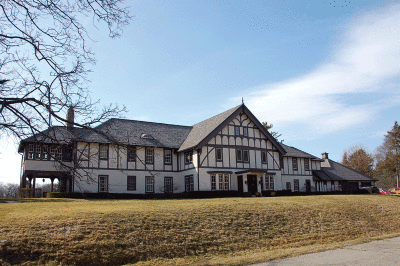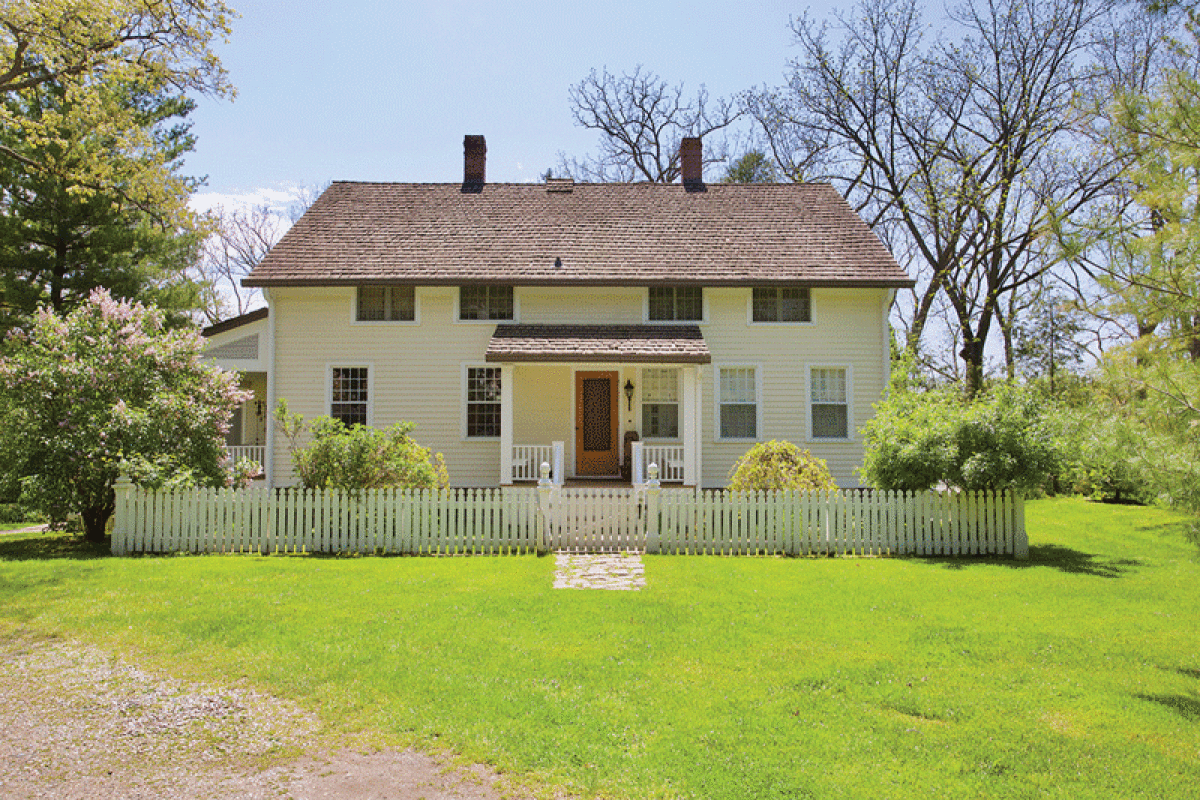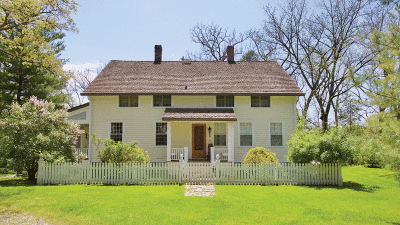
Walbri Hall in Bloomfield Hills also earned a spot on the National Register of Historic Places.
Photo provided by the State Historic Preservation Office
BLOOMFIELD HILLS/BLOOMFIELD TOWNSHIP — Two properties in the Bloomfield area are among 14 historic Michigan properties recently added to the National Register of Historic Places.
Based on their representation of distinctive architectural styles in the region, the private residences — the Elijah Bull House in Bloomfield Township and Walbri Hall in Bloomfield Hills — were selected for inclusion on the U.S. federal government’s official list of districts, sites, buildings, structures and objects deemed worthy of preservation for their historic significance.
“The interesting thing about both of these was the process was initiated by both the homeowners themselves,” said Todd Walsh, National Register coordinator for the State Historic Preservation Office.
The National Register is a program of the National Park Service and is administered by the states — which, in Michigan, is the State Historic Preservation Office. To be considered for listing in the National Register, a property must generally be at least 50 years old, and must also be significant when evaluated in relation to major historical events or trends in the history of their community, the state, or the nation. Officials said a property must also possess “historic integrity,” the ability to convey its significance.
“The process can take anywhere from 12-18 months to complete — from the preliminary questionnaire all the way to it being listed in the National Register,” said Walsh.
The Elijah Bull House, located at 6115 Wing Lake Road in Bloomfield Township, appears to be the township’s only remaining pre-1850 Federal style house, according to an application completed by Laurie K. Sommers, a historic preservation consultant. The home, she said, is “a rare and important” example of middle 19th century folk architecture in Bloomfield Township and Oakland County, and is “unusual in both architectural style and early construction date.” Less than 10 National Register examples of Federal style exist statewide, and there is only one other recognized on the list in Oakland County — the Botsford Inn in Farmington (circa 1836), which she said was considerably altered.
“The Elijah Bull House has architectural significance, and because of its age, it is also significant for its historical associations with the exploration and settlement of Oakland County,” Walsh said.
In her application, Sommers said the property illustrates the settlement patterns of Bloomfield Township, the influence of the state of New York in the settlement of Michigan, and the domestic life of a prominent early settler in the middle of the 19th century. According to the application, the timber frame and fieldstone house was reportedly constructed during the 1830s for pioneer Anglo-American settler Elijah Bull, who arrived from Orange County, New York, via Monroe, Michigan, in 1829 and developed the property into a farm. Bull also served in township government and reportedly played an important early role in the development of the township. He and his second wife, Mary Ellen Kyle, promoted township public education by donating land for the nearby Wing Lake School, a prominent local landmark.
“The interesting thing about the Elijah Bull House and its architecture is not just its age; what’s really cool about it is that Michigan was largely settled by New Englanders, and especially people from New York. The Bull House illustrates the building traditions that New York settlers brought with them to Michigan as they settled the state. You see not only the development of Oakland County, but you also see the development of America in a sense in the Bull House — how people moved westward and relied on the building traditions that they learned in the east to build houses here,” Walsh explained.
Walbri Hall — located on Walbri Drive in the Woodcrest Lakes subdivision in Bloomfield Hills — was designed by Detroit architect Charles Kotting in the Tudor-Revival style and built in 1925 as the summertime country estate of Walter O. Briggs, a prominent Detroit industrialist and businessman. The designation of “Walbri,” was a combination of the first three letters of Walter Briggs’ first and last names. After Briggs died in 1952, his children inherited the estate and subdivided the acreage, leaving a little over 2.5 acres surrounding the hall. The building itself went through various owners before being purchased by the present owners in 2011.
“In the case of Walbri Hall, the significance of that property was architectural. It is a really good example of Tudor Revival style architecture,” Walsh said.
Nathalie Wright, an historic preservation consultant, says Walbri Hall embodies the distinctive characteristics of the Tudor Revival style and retains original massing, architectural details, and materials of the era — such as stucco, half-timbering, and leaded-glass windows. Additional character defining features at Walbri Hall include the large stone chimneys, bay windows in the front gable section, and grouped windows.
More than 96,000 properties across the country, including nearly 2,000 in Michigan, have been listed in the National Register since the program began in the 1960s.
Deputy State Historic Preservation Officer Martha MacFarlane-Faes said historic properties tell the stories of our communities, the state and the nation.
“They illustrate our shared history, foster a sense of pride in our communities, provide recognition of our historic places, and generate investment and economic activity,” she said in a statement. “SHPO is honored to join with so many people and communities across the state in celebrating a diverse group of properties that have been listed in the National Register of Historic Places in Michigan in 2022.”
Listing of a property in the National Register is honorary and places no restrictions on what a property owner may do. Walsh said property owners are not required to open the site to the public nor to display a plaque acknowledging the listing. However, he said listing in the National Register provides opportunities for promotion; makes available certain incentives, like grants and tax credits that foster investment in cities, towns, and villages; and allows for the consideration of historic resources when federal funding or permits are involved.
For more information about the National Register of Historic Places program in Michigan, and on how to nominate a property, visit https://www.michigan.gov/nrhp.
 Publication select ▼
Publication select ▼























